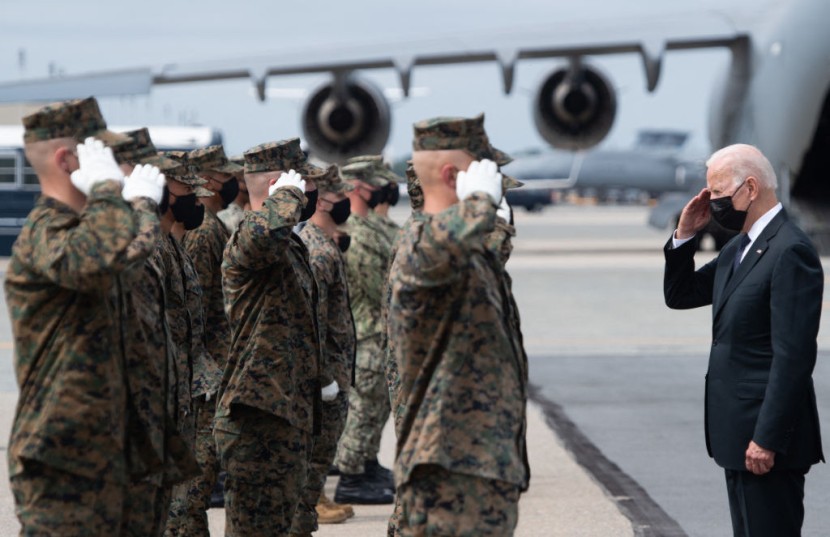
U.S. officials said on Wednesday that nearly 3,000 more troops will be sent to Poland and Romania to protect Eastern Europe from a potential spillover from the crisis over the massing of Russian troops near Ukraine.
The Russian government has rejected intentions to invade Ukraine, but it mocked Britain on Wednesday, calling Prime Minister Boris Johnson "utterly bewildered" and accusing British MPs of "stupidity and ignorance."
Biden has increased his army presence in Eastern Europe by 3,000
Thousands of troops have been stationed around Ukraine's borders, and Moscow has threatened to take unspecified military action if its demands are not met, including NATO's promise to never accept Kyiv.
In addition, roughly 1,700 military men from the 82nd Airborne Division, stationed in Fort Bragg, North Carolina, would deploy to Poland, according to the Pentagon, while a Stryker squadron based in Vilseck, Germany, would be transferred to Romania. From Fort Bragg, 300 more military men will be sent to Germany.
The goal, according to Pentagon spokesman John Kirby, was to send a strong message to Putin and, more importantly, to the rest of the world that NATO is important to them and their partners, Reuters reported.
According to Kirby, the Romanian government has "expressly invited" a Stryker Squadron, a mounted cavalry unit built to deploy fast, to send troops to Romania. He maintained that the army moves are not permanent and are aimed to respond to the present security situation.
According to authorities, the U.S. soldiers are scheduled to leave in the next few days. In a statement, NATO Secretary-General Jens Stoltenberg said the U.S. deployment was welcome and that it serves as a strong symbol of U.S. commitment.
The new forces' military troops might also be employed to assist with the evacuation of the approximately 30,000 Americans who live in Ukraine. If that happens, the troops are unlikely to be transferred to Ukraine, but rather near the Ukrainian border, where they will be in charge of the operation.
The United States stated last week that it had placed 8,500 troops on high alert areas as part of a 40,000-strong NATO Response Force in case they were needed, according to New York Post.
Washington, Moscow remain at odds over Ukraine
Read Also : Russian Navy Live-Fire Drills in the Baltic Sea Causes NATO To Shudder, Adds Tension To Western Provocation
As reassurance to friends, the Pentagon has put roughly 8,500 U.S. soldiers on higher notice for possible deployment to Europe, and officials have hinted that additional units might be placed on higher alert shortly. In Europe, the United States already has between 75,000 and 80,000 troops stationed permanently and in regular rotations in locations like Poland.
With no indication of a diplomatic solution, Washington and Moscow have remained at odds over Ukraine. According to a report in a Spanish newspaper on Wednesday, if Russia pulls back from the edge in Ukraine, the U.S. may be prepared to engage in a deal with Russia to reduce concerns over missile installations in Europe.
Last week, the daily El Pais published two documents that appeared to be written responses from the U.S. and NATO to Russia's proposals for a new European security arrangement. The State Department of the United States declined to comment on them.
But the language closely mirrors words delivered to the media last week by NATO Secretary-General Jens Stoltenberg when he spelled out the 30-nation military organization's position on Russia's demands. NATO claimed it never commented on "alleged leaks."
"A transparency system to validate the absence of Tomahawk cruise missiles at Aegis Ashore installations in Romania and Poland," according to the US document, which is classified as a confidential non-paper by the U.S. government, as per ABC7 Chicago.
Related Article : US State Department Starts Pulling Out Families of Embassy Personnel in Belarus Amid 'Concerning' Russian Military Activity
@YouTube
© 2025 HNGN, All rights reserved. Do not reproduce without permission.








